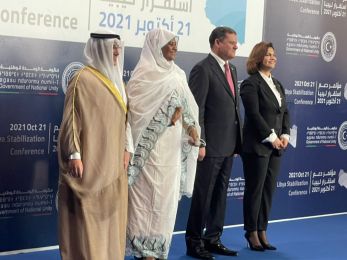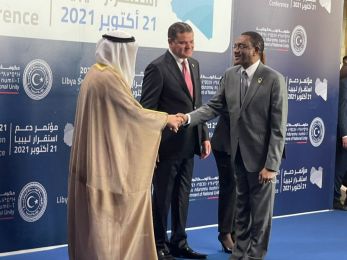Trade Policy and Export Strategy document to be ready by end of third quarter: Majuru
Harare, Zimbabwe (PANA) - ZimTrade chief executive officer Allan Majuru says he expects the Trade Policy and Export Strategy (TPES) document meant at boosting exports to be ready before the end of the third quarter, an official source said here Monday.
The TPES is an implementation framework document that is expected to guide government and the private sector on increasing Zimbabwe's exports.
Exports are the main source of foreign currency generation in Zimbabwe as the country uses a multi-currency basket for its monetary needs.
“Yes. Right now it (TPES) is getting input from the private sector where it is making a lot of rounds so that we get full feedback from them so we are just waiting for their input. I want it to be out before the end of the third quarter because it has to be very structured as the guys who do the business of exports have to really put their input. So that is what we are doing," Majuru, in a phone interview with PANA said here Monday.
“It is sort of an implementation framework on a sector by sector basis of where we want to be and where we are now in terms of exports. It is just a simple strategy which focuses on sectors for us to grow exports.”
However, he said that the figure which TPES would be targeting in terms of annual exports was still being discussed as it needed input from the private sector.
ZimTrade is the country’s trade development and promotion organization.
“I can decide to work with my simulations and put a figure but what we want is also so to be guided by capacity so that we own the goals together as the private sector and government,” Majuru said.
This comes as Zimbabwe exported US$4.3 billion worth of goods compared to imports worth US$7.01 billion in 2018, giving a trade deficit of US$2.71 billion, according to the Reserve Bank of Zimbabwe.
In 2017, imports were US$4,083 billion against exports of US$2,611 billion, for a trade deficit of US$1,47 billion.
As such, the increase in the trade deficit was 84.35 percent.
Since adopting a multi-currency basket in 2009 following a hyperinflationary period which ran up to 79.6 billion percent the country has had to generate foreign currency.
From all Zimbabwe’s sources of foreign currency, exports remain the largest source.
In that regard, trade deficits have reduced the impact of exports as the country remains heavily import-dependent due to its consumptive nature.
Weighing down exports are manufacturing firms who are failing to increase production on the back of the non-availability of foreign currency to import raw materials.
The country’s other sources of foreign currency generation comes from Diaspora remittances and foreign direct investment (FDI) both of which are low.
From a 2016 high of US$1.5 billion in Diaspora remittances, last year saw a decrease to about US$1.3 billion. The Diaspora community are increasingly finding informal means to send money to Zimbabwe as they feel disenfranchised by the Zanu PF controlled government.
Meanwhile, due to the perceived risk in doing business in foreign investors have largely shied away from investing in Zimbabwe.
This has resulted in annual FDI ranging between an estimated US$200 million and US$300 million from a high of US$500 million in 2015.
“Zimbabwe is pursuing an export-oriented industrialization agenda under the new economic order to propel economic growth and development through increased investment and exports. Due to the small size of our internal market and the financial liquidity challenges Zimbabwe is faced with, it is important for the country to utilize market access opportunities in the region under SADC,COMESA, the Tripartite, the African Union & beyond the continent,” the ministry of Foreign Affairs and International Trade said.
“Potential is there for Zimbabwe to generate foreign exchange through exports of services such as tourism, business services, medical services and education services among others. Zimbabwe's export markets remain limited to a few traditional partners and there's need to open up new markets.
"South Africa remains the largest market for Zimbabwean products, absorbing 51% of total exports, followed by the United Arab Emirates (18%), Mozambique (15%), Zambia (10%), and Belgium (2%).”
The Ministry of Foreign Affairs and International Trade said there was no doubt that exports were the only sustainable source of foreign currency for Zimbabwe to sustain the economy.
According the ministry, this has led to exports “contributing more than 60% of the country's foreign currency earnings ahead of other sources such as FDI”.
“Foreign Currency generation is key to sustaining the functioning of the economy including sustaining the balance of payments and supporting the productive sectors of the economy,” the ministry of Foreign Affairs and International Trade said.
-0- PANA TZ/RA 17June2019






